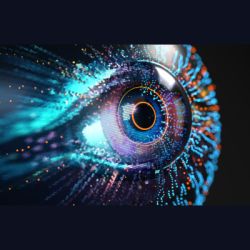A new laser system for measuring blood sugar has been developed by a team of researchers from Princeton University (USA). When work succeeds to create a portable version of the laser system, diabetics will be able to monitor their condition without pricking themselves to draw blood.
To test the new technique, the researchers directed their specialised laser at a person's palm to get a blood sugar measurement. The laser penetrated the skin cells and was partially absorbed by the sugar molecules in the patient's body, they explained.
Glucose monitors are required to have a blood sugar reading within 20 percent of the patient's actual level. The new laser method at its current version has an accuracy rate of 84 percent, according to the Sabbir Liakat, the study's lead author.
Work to Improve the System
The system works now but it can still be improved, said Liakat, a graduate student in electrical engineering.
"With this work we hope to improve the lives of many diabetes sufferers who depend on frequent blood glucose monitoring," said Claire Gmachl, the Eugene Higgins Professor of Electrical Engineering and the project's senior researcher.
In its early days, the laser was an experimental setup that filled up a moderate-sized workbench and required an elaborate cooling system to work. The cooling problem has been solved, allowing the laser to work at room temperature. The next step is to shrink the system, Gmachl said.
For their experiment, the investigators used the laser to measure the blood sugar levels of three healthy individuals before and after eating 20 jellybeans apiece, which raised their blood sugar levels. In addition, the researchers checked the measurements with a finger-prick test. They performed the measurements repeatedly for several weeks.
Errors Within Allowable Limit
Data from the experiment showed that the laser measurements readings produced "average errors somewhat larger than the standard blood sugar monitors." Those readings were within the clinical requirement for accuracy, the investigators said.
The research team is keen to have a larger dataset of measurements to work with. This summer, the team plans to get the system on a mobile platform so they can bring it to different places such as clinics to obtain more measurements, Liakat added.
The key to the system is the infrared laser's frequency. Current medical gadgets usually use the "near-infrared" (just beyond what the eye can see). As this frequency is not blocked by water, it can be used in the body which largely consists of water. However, this interacts with many acids and chemicals in the skin, making it impractical to use for measuring blood sugar.
Other Applications
Mid-infrared light, which is not as strongly affected by these other chemicals, works well with blood sugar. Such light is difficult to harness using standard lasers, and requires relatively high power and stability to penetrate the skin and scatter off bodily fluid. (The target is not blood but the dermal interstitial fluid, which has a strong correlation with blood sugar.)
The breakthrough came with the advent of the quantum cascade laser that is very good at producing mid-infrared light.
"Because the quantum cascade laser can be designed to emit light across a very wide wavelength range, its usability is not just for glucose detection, but could conceivably be used for other medical sensing and monitoring applications," Gmachl pointed out.
Source: ScienceDaily.com
Image credit: Princeton University, Engineering School
To test the new technique, the researchers directed their specialised laser at a person's palm to get a blood sugar measurement. The laser penetrated the skin cells and was partially absorbed by the sugar molecules in the patient's body, they explained.
Glucose monitors are required to have a blood sugar reading within 20 percent of the patient's actual level. The new laser method at its current version has an accuracy rate of 84 percent, according to the Sabbir Liakat, the study's lead author.
Work to Improve the System
The system works now but it can still be improved, said Liakat, a graduate student in electrical engineering.
"With this work we hope to improve the lives of many diabetes sufferers who depend on frequent blood glucose monitoring," said Claire Gmachl, the Eugene Higgins Professor of Electrical Engineering and the project's senior researcher.
In its early days, the laser was an experimental setup that filled up a moderate-sized workbench and required an elaborate cooling system to work. The cooling problem has been solved, allowing the laser to work at room temperature. The next step is to shrink the system, Gmachl said.
For their experiment, the investigators used the laser to measure the blood sugar levels of three healthy individuals before and after eating 20 jellybeans apiece, which raised their blood sugar levels. In addition, the researchers checked the measurements with a finger-prick test. They performed the measurements repeatedly for several weeks.
Errors Within Allowable Limit
Data from the experiment showed that the laser measurements readings produced "average errors somewhat larger than the standard blood sugar monitors." Those readings were within the clinical requirement for accuracy, the investigators said.
The research team is keen to have a larger dataset of measurements to work with. This summer, the team plans to get the system on a mobile platform so they can bring it to different places such as clinics to obtain more measurements, Liakat added.
The key to the system is the infrared laser's frequency. Current medical gadgets usually use the "near-infrared" (just beyond what the eye can see). As this frequency is not blocked by water, it can be used in the body which largely consists of water. However, this interacts with many acids and chemicals in the skin, making it impractical to use for measuring blood sugar.
Other Applications
Mid-infrared light, which is not as strongly affected by these other chemicals, works well with blood sugar. Such light is difficult to harness using standard lasers, and requires relatively high power and stability to penetrate the skin and scatter off bodily fluid. (The target is not blood but the dermal interstitial fluid, which has a strong correlation with blood sugar.)
The breakthrough came with the advent of the quantum cascade laser that is very good at producing mid-infrared light.
"Because the quantum cascade laser can be designed to emit light across a very wide wavelength range, its usability is not just for glucose detection, but could conceivably be used for other medical sensing and monitoring applications," Gmachl pointed out.
Source: ScienceDaily.com
Image credit: Princeton University, Engineering School
Latest Articles
glucose monitoring, diabetics, blood sugar
A new laser system for measuring blood sugar has been developed by a team of researchers from Princeton University (USA). When work succeeds to create a po...
























